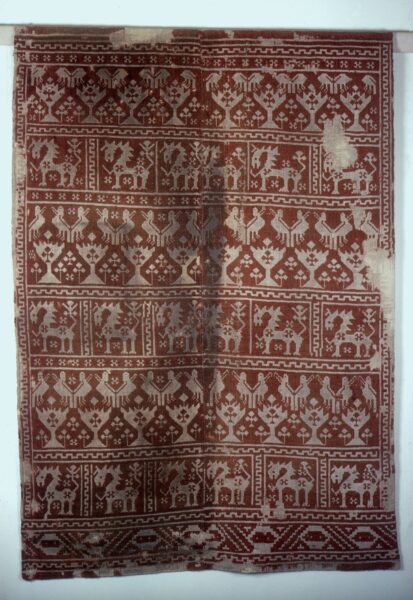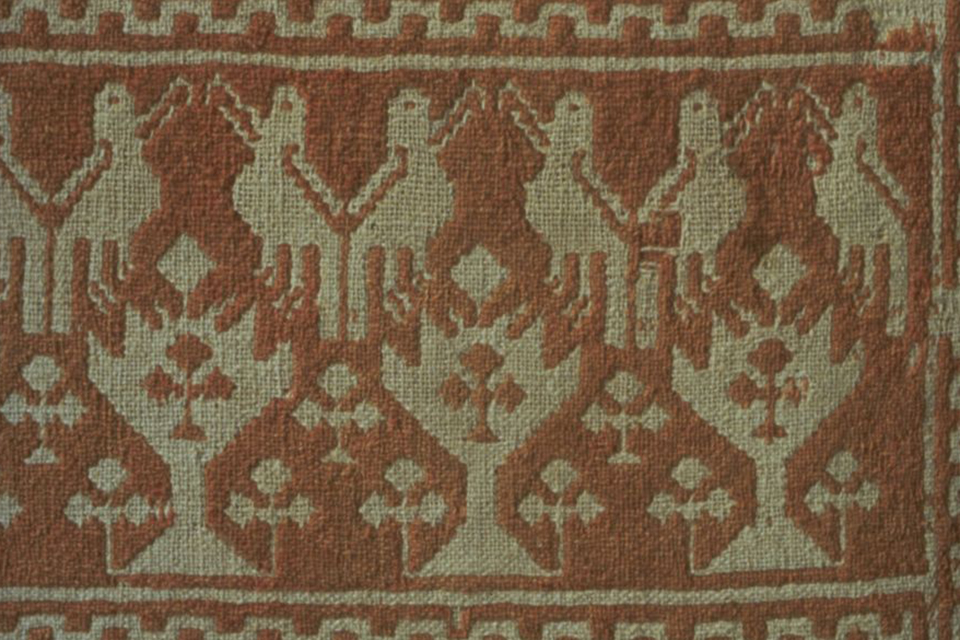The church in Söndra Råda in Wärmland in Sweden burnt to the ground in 2003. Luckily, this piece of a late medieval tapestry had been deposited in Stockholm in 1960.

Now kept in The National Museum in Stockholm, this precious piece of a medieval tapestry was found in the old timber church in Söndra Råda in Värmland in Sweden in the 1920s. Later, it undervent a thorough conservation to be formally deposited in 1960
The double cloth is woven of linen and coarse red wool featuring two patterns. One consists of trees of life nested in a forest and topped with birds. The other features a four-legged animal, perhaps an elk. The tapestry is bordered with a simple meander. Before its rescue, it had been used as a cover of the altar and as such it is known in the literature. Originally, it mayhave been used as a tapestry covering a wall. Or – more likely – it was used as a pall to cover the casket or coffin at the burial. In the earliest inventory from 1702, the textile is mentioned as such. The tapestry measures 1,29 x 1,91 m and has been dated to the early 16th century.
The textile has been compared to other preserved tapestries in Norway and Sweden and has been identified as a local production inspired by early medieval patterned silks from the Middle East.
The textile is part of a small but precious collection of other textile fragments from the same church – a double weave fragment of a possible antependium from the later Middle Ages repaired with pieces of printed linen, likely from Germany (Nuremberg). However, the beiderwand-technique was known in Schleswig-Holstein in the 14th century and other production-centres may have been in play.
SOURCE:
Täcka av Textil, Inventarienummer 26459, Statens Historiska Museum Stockholm
READ MORE:
By Vivi Sylwan
Fornvännen 1924, pp 175 -203
READ ALSO:
